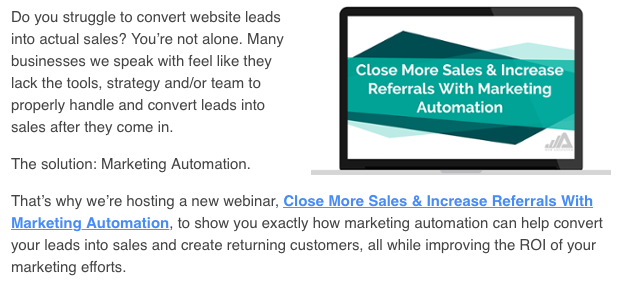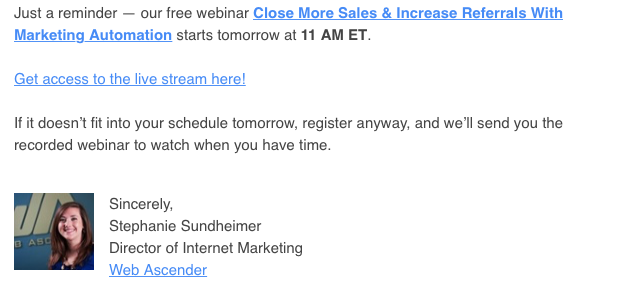Once you have made the decision to create a lead nurturing email campaign, there is much to strategize! Whether this is your first or hundredth nurture campaign, take a look at the following tips to see how you can write better lead nurturing emails.
1. Set a Specific Goal for Lead Nurturing Email Campaign
When developing an email nurture campaign, be sure a greater goal exists. What is the goal of your nurture email campaign? Many businesses have the obvious goal to collect more leads (it is called a lead nurturing campaign after all), but don’t have the long-term strategy to actually nurture and gain the trust of potential customers. Whatever the goal may be, be sure it’s specific and that the plan of action is geared towards achieving that specific goal.
2. Lead Nurturing Emails Should Be Problem-Solution Focused
Once you have established the goal of your nurture campaign, outline the emails you’ll write and what each one will communicate. Whether the individual goal of each email is to get the reader to click-through to a blog post, read a case study, or fill out a form, create a problem and solution scenario in the content of the email that will relate to your customers. Here’s an example of a problem-solution email:
3. The Best Emails are Short and Sweet
Most of your emails are going to be skimmed by recipients. Depending on the messaging, make your emails easy to read by keeping your nurture emails short and to the point. Opening a message to a large body of text can often look overwhelming and quickly end up in the trash. In this email, the goal was simple and straightforward—attract last-minute attendees for a webinar:
4. Personalize Lead Nurturing Emails
When sending emails to a contact list, take advantage of the ability to personalize the subject line and greeting. Emails with the recipient’s name in the subject line are more likely to catch their eye and therefore, result in being opened. Investigate personalization options on your email server.
5. Write Emails in Second Person (Using the Pronouns “You” “Your” and “Yours’)
Be direct and personal with your customers! When recipients open emails from you, make them easy to read and avoid stiff language. Your lead nurturing emails are trying to build trust with your potential customers, so make them feel as if you already know them.
6. Maintain a Natural Progression
When planning your nurture campaign, think about how order of topics can logically flow together. For example, if a mortgage company wants to run a lead nurturing campaign about refinancing, the beginning emails should speak to a broader audience—what is a refinance, how it is beneficial, and various refinance options. Whereas towards the end of the lead nurturing campaigns, the emails should be more specific, perhaps going into detail about how to speed up the refinance process or tips for people in specific mortgage situations. Ultimately, the last email asks for the “sale” which is typically a form to complete. By the final email, the customer is accustomed to seeing your business’ name in their inbox, they’ve gained some valuable information from you over several weeks, and they are more willing to trust you with their information. Take a look at these examples of successful drip marketing campaigns.
Lead nurturing emails are a great way to not only gain more leads, but gain more leads that are truly interested in your product or service. By the end of the campaign, you know that when someone fills out a form on your website, they are much more likely to become a customer. What tips do you have to improve lead nurturing emails? Let us know in the comments!


